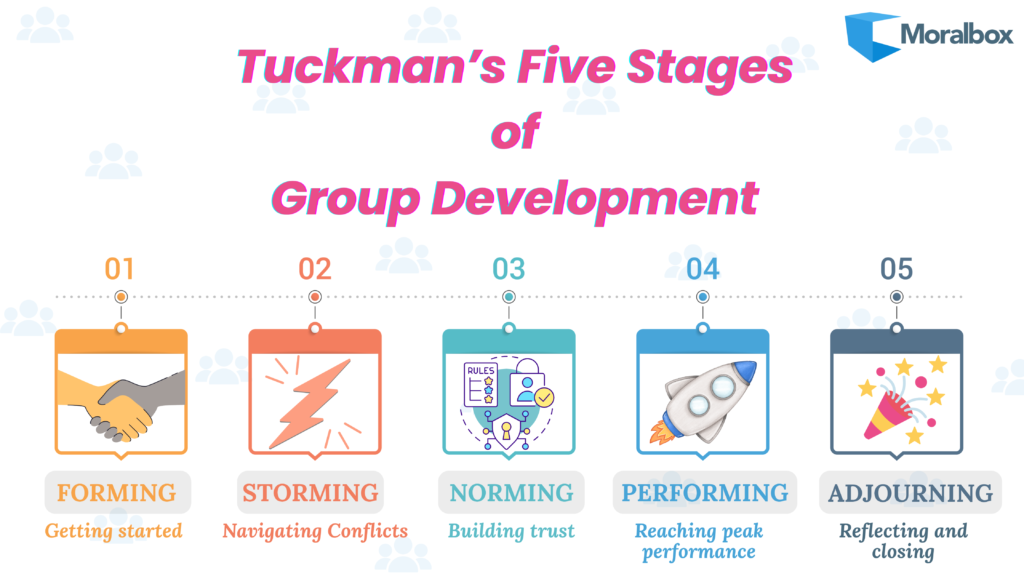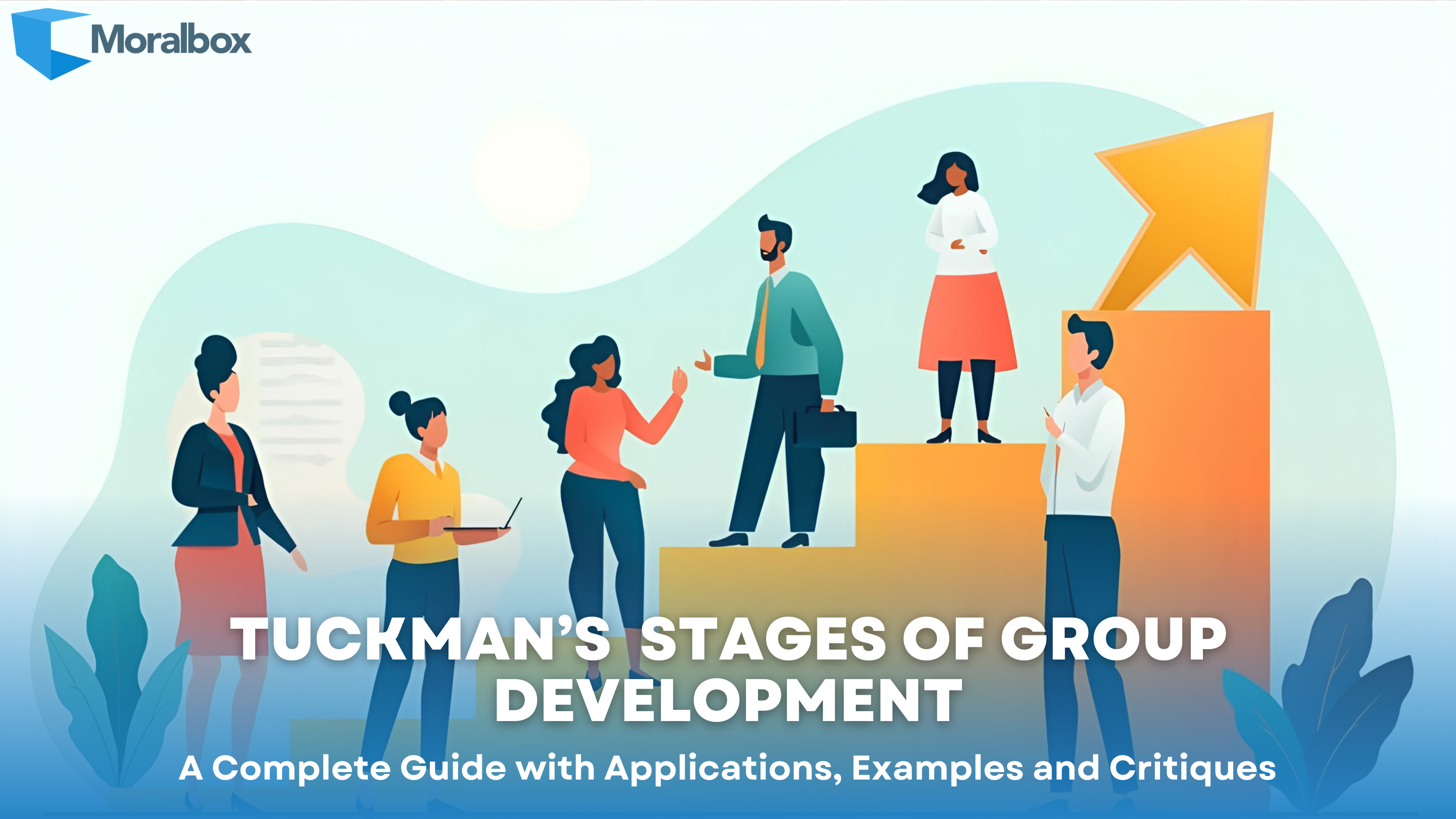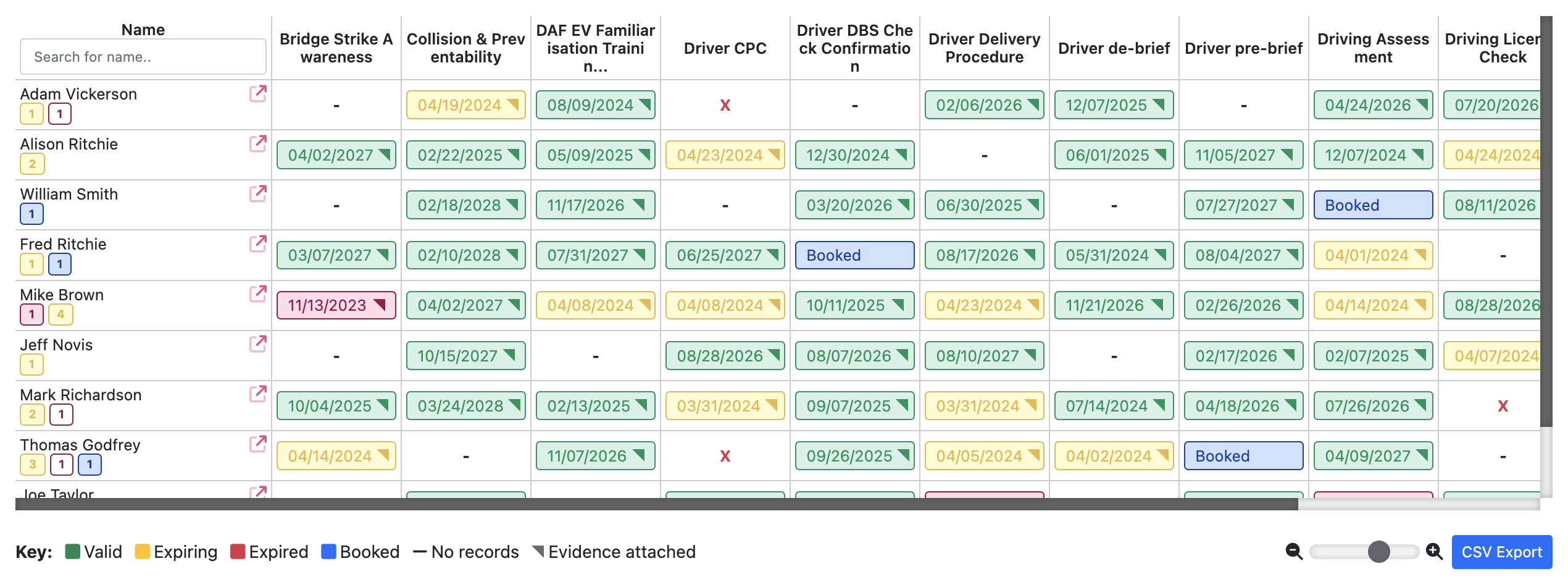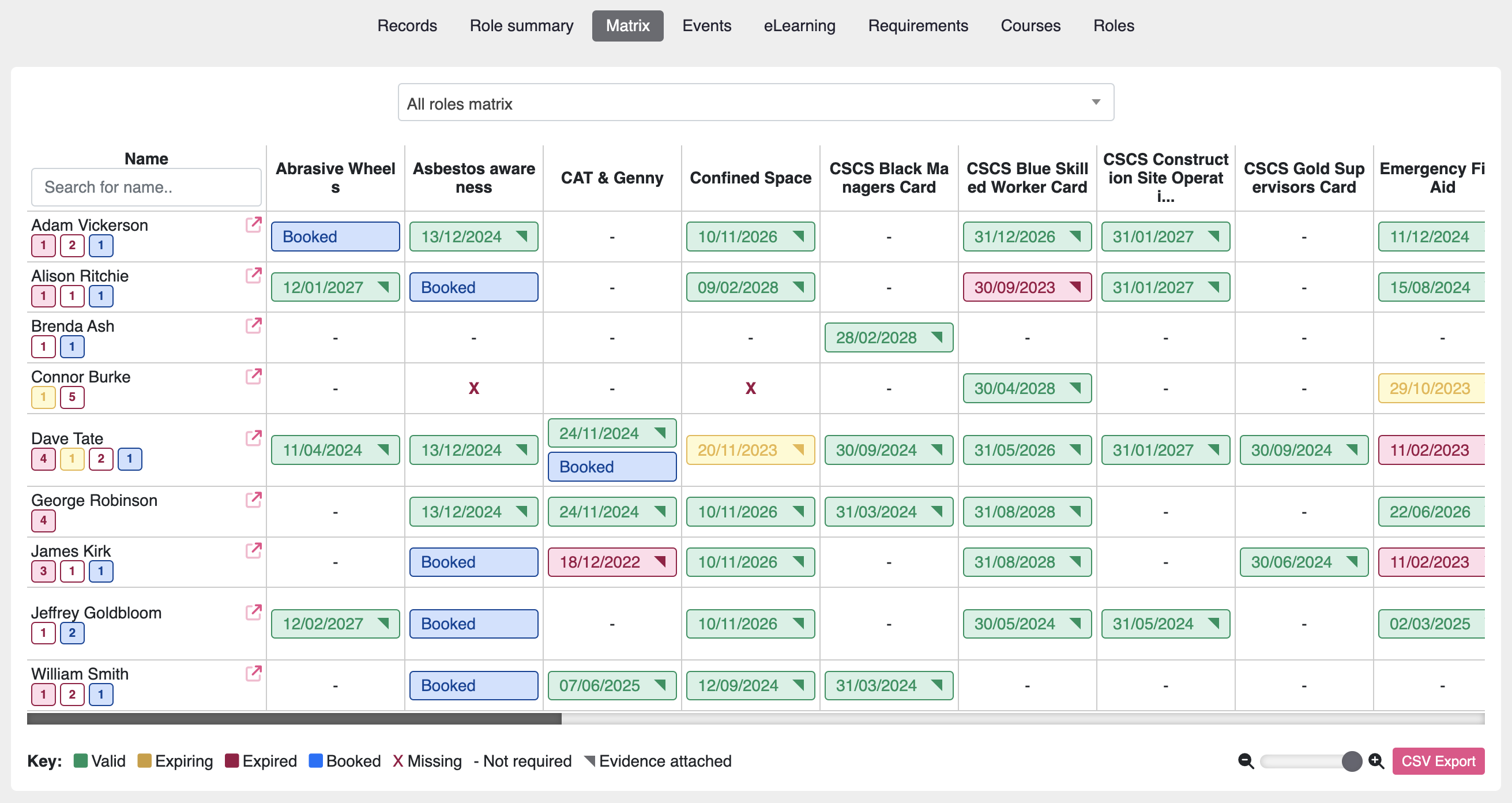Introduction: A scene we all can relate to
You’ve probably experienced it: that awkward first meeting of a new group. It could be classmates nervously discussing a group project, colleagues sitting around a table at a new job, or professionals collaborating across departments for the first time. Everyone smiles politely, waiting for someone else to take the lead. Ideas float around, but direction feels hazy. Tuckman’s Stages of Group Development can help in understanding how such groups evolve.
Then, just a few days later, the same group might be debating intensely, arguing over approaches and priorities. Tension rises, voices overlap, and progress seems uncertain. Yet, almost suddenly, something shifts. People start listening, decisions become smoother, and what once felt chaotic begins to click. Eventually, the group works so seamlessly that it’s hard to imagine how clumsy it once was.
What happened in between?
That invisible transition from confusion to cohesion is exactly what Tuckman’s Model of Group Development explains. It maps how teams, classrooms, and professional groups evolve through predictable stages on their way to high performance. Whether you’re leading a project, teaching a class, or simply part of a team, understanding these stages helps you guide collaboration, navigate conflict, and bring out the best in every group.
TABLE OF CONTENTS
- Introduction: A scene we all can relate to
- What are Tuckman’s Stages of Group Development?
- The Five Stages of Tuckman’s Model
- Example: Applying Tuckman’s Model Step by Step
- Applications Across Sectors
- Comparison of Tuckman’s Model with Related Models
- Strengths and Limitations of Tuckman’s Model
- Common Pitfalls and How to Avoid Them
- Conclusion
- FAQs
- References
What are Tuckman’s Stages of Group Development?
In 1965, Bruce W. Tuckman introduced his seminal article “Developmental Sequence in Small Groups”, in which he proposed that groups evolve through distinct phases if they are to function productively (Tuckman, 1965). His model linked task-oriented work (what the group does) with interpersonal dynamics (how the group members relate) and argued that both must mature together.
Later, in 1977, Tuckman and Mary Ann Jensen added a fifth stage, “Adjourning”, to account for the dissolution or transition of groups after task completion (Tuckman & Jensen, 1977). Today, the model is widely used in team development, organisational behaviour, and learning contexts, and is recognised for its intuitive clarity and wide applicability (Keene, 2024). Importantly, modern research emphasises that while the stages offer a useful roadmap, the journey is often non-linear and must be adapted to contemporary settings like hybrid work (Stein, n.d.).
👉 Suggested reading: Gibbs’ Reflective Cycle, a quick guide to individual reflection that complements Tuckman’s focus on group growth.
The Five Stages of Tuckman’s Model
1. Forming
In the forming stage, a group first comes together and members are often polite, enthusiastic and cautious at the same time. They are still orienting themselves to the task, to one another and to the overall purpose of the group. At this point, uncertainty prevails, and individuals may wonder what is expected of them and how decisions will be made.
Therefore, the leader or facilitator plays a crucial role in providing structure, clarifying objectives and setting ground rules. By doing so, they reduce ambiguity and anxiety while encouraging participation and trust. Moreover, encouraging introductions, establishing a clear mission statement and defining early norms can help the team build a sense of direction and belonging from the outset.
2. Storming
As the group becomes more familiar, differences in perspective, working style and expectation begin to surface. This is known as the storming stage, where tension and resistance are almost inevitable. Members may challenge leadership, question priorities or express frustration about unequal workloads. Although this period can feel uncomfortable, it is a necessary step in the team’s development because unresolved conflict can later resurface in more disruptive ways (Wan Yadri et al., 2024).
Therefore, rather than suppressing disagreements, effective leaders facilitate open dialogue, mediate disputes and promote a culture of respectful challenge. Through these honest conversations, teams begin to recognise diverse strengths and start building the foundations of genuine collaboration. struggles, disagreement over objectives or methods, or resistance to roles. This stage is often uncomfortable but essential: it surfaces latent conflicts and forces the team to address norms and power dynamics consciously. Effective leadership in this phase involves mediation, open communication and helping the team navigate tension rather than suppress it (Wan Yadri et al., 2024).
3. Norming
Following the turbulence of storming, the team typically enters the norming stage, where relationships strengthen and a sense of unity emerges. Members now understand each other’s strengths and communication styles, and mutual respect eventually develops. Consequently, the focus shifts from individual concerns to collective goals. Procedures, shared expectations, and unwritten social rules become clearer, allowing work to proceed more smoothly.
During this phase, the leader can gradually step back, empowering the group to take more ownership while remaining available for guidance. As trust solidifies and cooperation becomes the default mode, the team begins to experience genuine cohesion and momentum.
4. Performing
When the team reaches the performing stage, it operates at its highest potential. Tasks are approached with confidence, roles are flexible, and members collaborate fluidly to achieve shared objectives. Decision-making becomes distributed rather than centralised, and problem-solving feels natural and efficient. Moreover, communication is open and constructive, allowing the team to adapt swiftly to new challenges or changes in context. This level of maturity enables teams to maintain high productivity even with minimal oversight.
However, sustained performance requires vigilance. Changes in membership, shifting goals or external disruptions can push a team back toward earlier stages if not managed carefully (Muscato et al., 2022). Therefore, consistent feedback and reflection are essential to maintain balance and effectiveness.
5. Adjourning
Eventually, every team must conclude its work, marking the final stage known as adjourning. In other words, the group reflects on its achievements, recognises individual contributions and prepares to disband or transition to new tasks. This phase is often overlooked, yet it plays a vital role in providing closure and reinforcing learning. By taking time to review what went well and what could be improved, members consolidate their experiences for future projects.

Figure 1: Tuckman’s Five Stages of Group Development
Example: Applying Tuckman’s Model Step by Step
Picture a newly formed project team tasked with launching a new product. Members from engineering, marketing, and operations meet for the first time. All are polite, enthusiastic, and unsure of where to begin.
Forming:
In the first meeting, everyone shares ideas but avoids decisions. The project lead outlines the vision and sets an initial structure, helping to ease uncertainty and establish early expectations.
Storming:
A week later, friction appears. Priorities clash, communication breaks down, and frustration increases. Instead of ignoring the tension, the project lead brings the team together for an open discussion. However, as issues arise, the group begins to understand that disagreement is a natural part of growth.
Norming:
Then, roles become clear and communication steadier. The team sets meeting rhythms, agrees on responsibilities, and starts to trust one another. At this point, cooperation replaces confusion, and motivation builds.
Performing:
Soon, the team hits its stride. Problems are solved quickly, decisions are shared, and thus all members anticipate each other’s needs. Here, productivity peaks and the first deliverable is completed ahead of schedule.
Adjourning:
When the project wraps up, the team reflects on lessons learned, celebrates wins, and transitions smoothly to new work. Closure feels earned, and relationships remain strong.
At every step, asking simple questions like “Where are we now?” and “What do we need next?” helps teams stay aware of their stage and move forward with purpose.
To put this into practice, download the Tuckman Team Reflection Worksheet for free! It’s a simple guided tool to help your own team identify its stage, reflect together, and plan how to progress effectively.
👉 Suggested reading: Kolb’s Reflective Cycle, learn how to turn team experiences into actionable learning.
Applications Across Sectors
Tuckman’s model isn’t just for management textbooks, but it also plays out in classrooms, offices, hospitals, and even AI labs. For instance, see how it translates across different contexts:
Education
- Building structured teamwork: In group assignments, educators use Tuckman’s stages to help students form teams, set goals, and define scope during forming.
- Navigating conflict productively: During storming, students experience differences in working styles, learning how to negotiate roles and manage disagreement.
- Encouraging collaboration: As they move to norming and performing, they establish shared processes, communicate more openly, and also deliver outcomes more effectively.
- Reflecting and closing: Finally, in adjourning, learners review their teamwork experience and identify lessons for future collaboration.
A recent study of 178 foundation-level students found a strong correlation between effective conflict management during the storming stage and improved learning outcomes, highlighting that trust and open communication significantly boosted productivity (Wan Yadri et al., 2024).
Workplace and Business
- Supporting new or changing teams: Project managers and leaders use Tuckman’s model to anticipate friction when new teams form or when departments reorganise.
- Guiding hybrid collaboration: Especially during the shift to hybrid work, understanding the forming and storming phases helped leaders maintain cohesion and psychological safety.
- Encouraging agility: As teams progressed through norming and performing, explicit focus on feedback, check-ins, and shared accountability accelerated performance and morale.
Interestingly, Buła et al. (2024) found that hybrid teams that consciously addressed early-stage dynamics achieved faster alignment and more sustainable performance compared to those that did not.
Healthcare and Other Sectors
- High-stakes collaboration: In healthcare, emergency response, and simulation training, Tuckman’s framework helps facilitators build trust quickly, manage tension, and transition between stages smoothly. It also promotes open communication and shared confidence during critical operations.
- Post-incident learning: Debriefs and reflective sessions mirror the adjourning stage, ensuring teams extract learning from high-pressure events. Furthermore, this reflection reinforces teamwork and readiness for future challenges.
- Emerging technology teams: Even in human-AI collaborations, the model remains relevant. A 2024 pilot study found that structuring human-agent teamwork around forming, storming, and norming improved communication design and trust between humans and digital agents (Kaelin et al., 2024). As a result, both human and digital partners adapt and collaborate more effectively.
Overall, by understanding Tuckman’s stages of group development, educators, leaders, and practitioners can guide their teams through uncertainty toward greater cohesion, adaptability, and high performance.
👉 Suggested reading: Read Cognitive Learning Theories to explore the psychology behind how teams think, learn and perform
Comparison of Tuckman’s Model with Related Models
While Tuckman’s model remains the cornerstone of group development theory, other frameworks such as Wheelan’s Integrated Model and Belbin’s Team Roles Model provide complementary perspectives on how teams mature and perform.
| Model | Core Focus | Key Stages / Elements | Best Used For |
|---|---|---|---|
| Tuckman’s Model (1965, 1977) | Describes how teams develop over time through evolving relationships and task focus. | Forming → Storming → Norming → Performing → Adjourning | Understanding team dynamics, diagnosing performance challenges, and planning interventions. |
| Wheelan’s Integrated Model of Group Development (1990, 2009) | Evidence-based progression of group maturity and productivity validated through empirical research. | Dependency & Inclusion → Counterdependency & Fight → Trust & Structure → Work & Productivity | Leadership development, organisational research, and long-term team assessment. |
| Belbin’s Team Roles Model (1981, 2010) | Focuses on individual behavioural roles and how diverse strengths combine for effective teamwork. | Nine Roles: Coordinator, Shaper, Plant, Implementer, Team Worker, Monitor Evaluator, Resource Investigator, Completer Finisher, Specialist. | Recruitment, team composition, HR, and performance coaching. |
Together, these three models provide a comprehensive and complementary view of teamwork. While Tuckman explains how teams evolve over time, Wheelan, on the other hand, reveals how they mature through evidence-based stages. Meanwhile, Belbin highlights how diverse individual strengths combine to sustain collaboration and performance.
Strengths and Limitations of Tuckman’s Model
Strengths:
- It offers a simple, memorable sequence that links “who we are” (relationships) with “what we do” (tasks).
- It is highly practical and adaptable; leaders can diagnose where a team is and decide appropriate interventions.
- It spans sectors and contexts like education, business, and healthcare and remains widely applied in the modern workplace.
Limitations:
- It often implies a linear trajectory, but in reality, teams may regress, skip stages or cycle back (Stein, n.d.).
- It was developed in older contexts and does not fully account for fluid, remote, hybrid and global teams unless adapted.
- If applied mechanically (tick-box style), it risks becoming a formula rather than a facilitative tool, losing nuance of culture, environment and individual differences.
Hence, it’s best used as a framework rather than a rigid script: adapt to the context, leverage reflection and allow for iteration.
Common Pitfalls and How to Avoid Them
| Pitfall | Better Practice | Why It Works |
|---|---|---|
| Treating the stages as rigid, sequential steps | Recognise that teams may revert to earlier stages when new members join or tasks change | Reflects real-world team dynamics and avoids surprise |
| Skipping the norming phase and pushing straight to performance | Facilitate norm-setting explicitly: create ground rules, define roles and check in on interpersonal dynamics | Builds trust, clarity and sustainable performance |
| Ignoring virtual/hybrid context | Adapt interventions: include informal virtual social time, frequent check-ins, trust-building exercises | Acknowledges modern team challenges and enhances engagement |
| Using the model as a one-time diagnostic only | Embed stage reflection into recurring team reviews, treat the model as a journey, not a checklist | Keeps team growth dynamic and ongoing |
Conclusion
Tuckman’s stages of group development offer one of the most enduring and actionable frameworks for guiding team evolution. Whether you’re launching a new project team, facilitating student group work or leading a hybrid/remote team, the progression of Forming, Storming, Norming, Performing and Adjourning gives you a versatile map of what to expect and how to act.
Apply the framework thoughtfully: recognise your team’s current stage, tailor your intervention, revisit progress regularly, and treat team development as a dynamic journey rather than a one-time event. When done well, this approach turns everyday teams into high-performing units.
FAQs
What is the purpose of Tuckman’s model?
The model offers a structured lens for understanding how teams evolve in both task execution and interpersonal dynamics, enabling leaders and facilitators to intervene appropriately at each stage.
Where is Tuckman’s model used?
It is widely used in education, business, healthcare and collaborative environments, especially in newly formed teams, reorganised groups or cross-functional project settings.
Is Tuckman’s model still relevant in 2025?
Absolutely. With the rise of hybrid teams, global collaboration and AI-augmented working, the fundamentals of team evolution remain, and recent studies show the model’s core stages still apply when thoughtfully adapted.
References
Belbin, R.M. (2010) Team Roles at Work. 2nd edn. Oxford: Butterworth-Heinemann.
Buła, P., Thompson, A. and Żak, A.A. (2024) ‘Nurturing teamwork and team dynamics in a hybrid work model’, Central European Management Journal, 32(3), pp. 475–489. Available at: https://doi.org/10.1108/cemj-12-2022-0277 (Accessed: 31 October 2025).
Kaelin, V.C., Tewari, M., Benouar, S. and Lindgren, H. (2024) ‘Developing teamwork: transitioning between stages in human-agent collaboration’, Frontiers in Computer Science, 6, 1455903. Available at: https://doi.org/10.3389/fcomp.2024.1455903 (Accessed: 31 October 2025).
Keene, B. (2024) Tuckman’s Stages of Group Development | EBSCO, EBSCO Information Services, Inc. | www.ebsco.com. Available at: https://www.ebsco.com/research-starters/social-sciences-and-humanities/tuckmans-stages-group-development (Accessed: 31 October 2025).
Muscato, A.F., Bush, S.A., Greenhaw, L.L. and Baker, C.N. (2022) Leading teams #2: Stages of group development. University of Florida IFAS Extension, EDIS Publication WC433. Available at: https://edis.ifas.ufl.edu/publication/WC433 (Accessed: 31 October 2025).
Stein, J. (n.d.) Using the stages of team development. Human Resources, Massachusetts Institute of Technology. Available at: https://hr.mit.edu/learning-topics/teams/articles/stages-development (Accessed: 31 October 2025).
Tuckman, B.W. (1965) ‘Developmental sequence in small groups’, Psychological Bulletin, 63(6), pp. 384–399.
Tuckman, B.W. and Jensen, M.A.C. (1977) ‘Stages of small-group development revisited’, Group & Organization Studies, 2(4), pp. 419–427. Available at: https://doi.org/10.1177/105960117700200404 (Accessed: 31 October 2025).
Wan Yadri, W.S., Ahmad, N.H.F., Abdul Kadar, N.S., Nur Kairanbayeva, N. and Mohd Johari, M.D. (2024) ‘The influence of conflict in group work according to Tuckman’s model’, E-Journal of Social Sciences and Humanities, 8 (Special Issue, October 2024). Available at: https://ejssh.uitm.edu.my/images/Vol8SIOct24/ICREST06_EJSSHVOL8_OCTOBER2024.pdf (Accessed: 31 October 2025).
Wheelan, S.A. (2009) Creating Effective Teams: A Guide for Members and Leaders. 3rd edn. Thousand Oaks, CA: Sage Publications.
Wheelan, S.A. (2016) Group Processes: A Developmental Perspective. 2nd edn. Boston, MA: Pearson.

Ananya is a Marketing Executive at Moralbox, passionate about creating content that connects learning with business impact.


